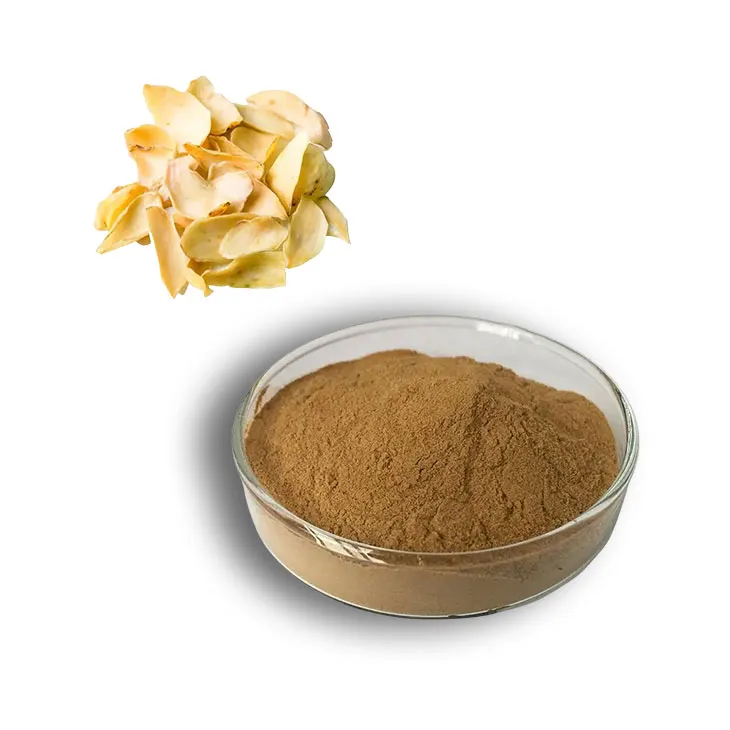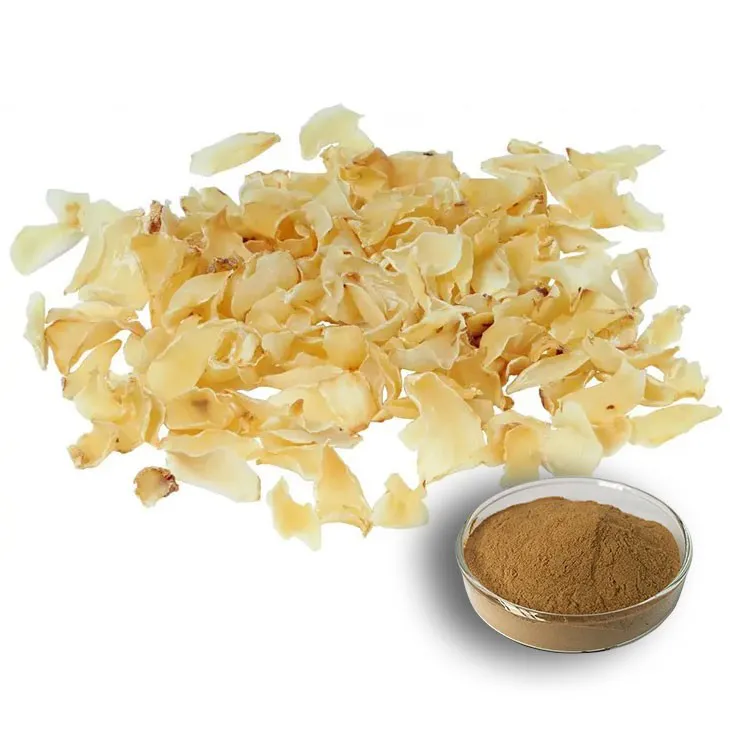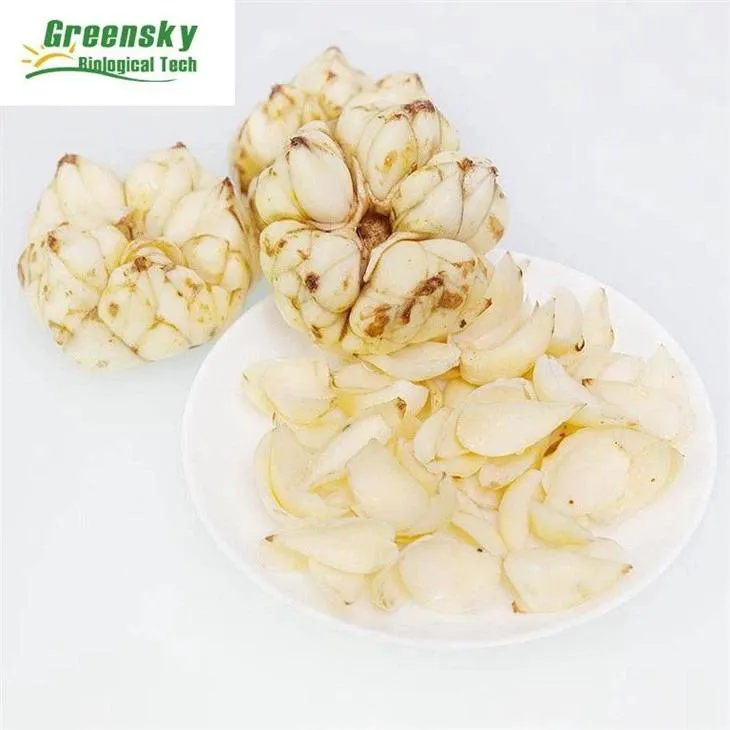- 0086-571-85302990
- sales@greenskybio.com
Lily extract: Uses, advantages, and manufacturing processes.
2024-11-12

1. Introduction
Lilies are not only beautiful ornamental plants but also a valuable source of natural substances. Lily extract has gained significant attention in recent years due to its multiple applications in various industries. This extract is rich in a variety of compounds that offer numerous benefits, making it a popular ingredient in different products.

2. Uses of Lily extract
2.1 In the Food and Beverage Industry
In the food and beverage industry, Lily extract serves as a natural flavor enhancer. The distinct flavor of lily is characterized by its delicacy and pleasantness, which can enhance the taste profile of many products. For example, it can be added to desserts such as cakes and puddings to impart a unique floral note. In beverages, it can be used in the production of herbal teas or specialty drinks, adding a refreshing and sophisticated flavor.
2.2 In Dietary Supplements
Lily extract is also used in dietary supplements because of its potential health - promoting properties. It is believed to contain compounds that can have positive effects on human health. For instance, it may support the immune system, helping the body to defend against diseases. Additionally, it might have antioxidant properties, which can combat oxidative stress in the body and potentially slow down the aging process at a cellular level.
2.3 In the Beauty Industry
The beauty industry has also recognized the value of lily extract. It can be incorporated into creams, lotions, and other skincare products. In these applications, it is often used for its potential anti - aging effects. The bioactive compounds present in lily extract may help to reduce the appearance of wrinkles, improve skin elasticity, and promote a more youthful complexion. It can also be used in haircare products, potentially enhancing the strength and shine of hair.

3. Advantages of Lily Extract
3.1 Versatility
One of the most prominent advantages of lily extract is its versatility. It can be integrated into a wide array of products. In the health industry, it can be formulated into tablets, capsules, and powders for easy consumption. In the beauty industry, as mentioned before, it can be found in various skincare and haircare products. This versatility allows manufacturers to use lily extract in different product categories, depending on their target markets and product concepts.
3.2 Rich in Nutrients and Bioactive Compounds
Lily extract is rich in nutrients and bioactive compounds. These include vitamins, minerals, and various phytochemicals. The presence of these substances contributes to its multiple functions. For example, certain vitamins in lily extract may play a role in maintaining healthy skin, while phytochemicals can have antioxidant or anti - inflammatory effects. The combination of these nutrients and bioactive compounds makes lily extract a valuable ingredient in products aiming to provide health and beauty benefits.

4. Manufacturing Processes of Lily Extract
4.1 Collection of High - Quality Lilies
The manufacturing process of lily extract commences with the collection of high - quality lilies. This step is crucial as the quality of the raw material directly impacts the quality of the final extract. Lilies are typically sourced from carefully cultivated farms or natural habitats where they grow abundantly. The collectors need to ensure that the lilies are in their prime condition, free from diseases, pests, and any signs of damage. Only healthy and fully - grown lilies are selected for further processing.
4.2 Processing to Break Down Plant Material
Once the lilies are collected, they need to be processed to break down the plant material and release the valuable components. There are different methods for this.
4.2.1 Maceration
Maceration is a common method used in the extraction process. In this method, the lily material is soaked in a liquid, usually a solvent such as ethanol or water, for an extended period. This long - duration soaking helps to release the active ingredients from the plant cells. The liquid penetrates the cell walls of the lily material, dissolving the desired compounds. After the maceration process is complete, the resulting liquid contains the dissolved lily extract, which can then be further purified and concentrated.
4.2.2 Steam Distillation
Another method is steam distillation, which is mainly employed when the desired components are volatile. In steam distillation, steam is passed through the lily material. The heat from the steam causes the volatile compounds in the lily to vaporize. These vapors are then collected and condensed back into a liquid form. This liquid contains the essential oil or volatile components of the lily extract. Steam distillation is particularly useful for extracting the fragrant and volatile substances in lily that contribute to its unique flavor and aroma.

5. Conclusion
In conclusion, lily extract is a remarkable natural substance with a wide range of uses, significant advantages, and well - defined manufacturing processes. Its applications in the food and beverage, dietary supplement, and beauty industries showcase its versatility and value. The advantages of being rich in nutrients and bioactive compounds make it a sought - after ingredient for products aiming to provide various benefits. The manufacturing processes, starting from the collection of high - quality lilies to the extraction methods like maceration and steam distillation, ensure that the valuable lily extract is obtained for different applications. As research on lily extract continues, it is likely that more applications and benefits will be discovered in the future.
FAQ:
What are the main uses of lily extract?
Lily extract is mainly used in the food and beverage industry as a natural flavor enhancer, adding a delicate and pleasant taste to products. It is also used in dietary supplements because of its potential health - promoting properties. In the beauty industry, it can be incorporated into creams and lotions for anti - aging effects.
What are the advantages of lily extract?
The main advantage of lily extract is its versatility. It can be used in a wide range of products across different industries. Additionally, it is rich in nutrients and bioactive compounds. These compounds contribute to various functions such as anti - aging in cosmetics and potential immune - boosting in supplements.
What is the manufacturing process of lily extract?
The manufacturing process starts with collecting high - quality lilies. One common method is maceration, which involves soaking the lily material in a liquid for a long time to release the active ingredients. Another method is steam distillation, mainly used when the desired components are volatile.
Can lily extract be used in the beauty industry?
Yes, it can. Lily extract can be incorporated into creams and lotions in the beauty industry. The bioactive compounds in it have anti - aging effects, which make it a valuable ingredient in beauty products.
Is lily extract beneficial for health?
It has potential health - promoting properties. For example, it may have immune - boosting effects when used in dietary supplements. However, more research is needed to fully understand all of its health benefits.
Related literature
- The Chemical Composition and Biological Activities of Lily Extracts"
- "Lily Extract: A Promising Ingredient in Food, Cosmetics and Supplements"
- "Manufacturing and Quality Control of Lily - based Extracts for Industrial Applications"
- ▶ Hesperidin
- ▶ citrus bioflavonoids
- ▶ plant extract
- ▶ lycopene
- ▶ Diosmin
- ▶ Grape seed extract
- ▶ Sea buckthorn Juice Powder
- ▶ Beetroot powder
- ▶ Hops Extract
- ▶ Artichoke Extract
- ▶ Reishi mushroom extract
- ▶ Astaxanthin
- ▶ Green Tea Extract
- ▶ Curcumin Extract
- ▶ Horse Chestnut Extract
- ▶ Other Problems
- ▶ Boswellia Serrata Extract
- ▶ Resveratrol Extract
- ▶ Marigold Extract
- ▶ Grape Leaf Extract
- ▶ blog3
-
Cranberry Plants and Skin - care Products.
2024-11-12
-
Aminolevulinic acid
2024-11-12
-
Resveratrol extract
2024-11-12
-
White Willow Bark Extract
2024-11-12
-
Maitake Mushroom Extract
2024-11-12
-
Acai Berry Extract
2024-11-12
-
Berberis aristata Extract
2024-11-12
-
Reishi mushroom extract
2024-11-12
-
Cocoa Extract
2024-11-12
-
Ginger Extract
2024-11-12
-
Green Tea Extract
2024-11-12





















